2024: A Year of Firsts
In May, Andy got to compete in his first STOL event when National STOL held the Heritage event at the Military Aviation Museum. Andy flew the Kitfox in the Sport category, and although its Subaru engine was underpowered he managed to finish the day with a total takeoff and landing score of 456 feet (and lots of ideas for future mods). Overall, it was a new and challenging experience and it was a lot of fun making new friends and getting a chance to see how National STOL promotes and runs their events and their focus on improving pilot proficiency.



The following month, Sport Class Air Racing and the Sport Air Racing Council (SARC) returned to Las Cruces, New Mexico for the first Pylon Racing Training Course (PRTC) . The primary objectives of the event were to maintain currency for the racers, and demonstrate and certify 3 new course layouts (4 mile Medallion course, 6.25 mile Bronze/Silver course, and 7.25 mile Gold course).

The first thing that stands out to people is the powerline. Rest assured that much attention has been paid to managing this risk. Warning lights and signs are posted on the course, and the powerline towers themselves serve as large landmarks. For the backside of the course the minimum course altitude is also increased from 50 feet above the ground to 100 feet. And most importantly, all of the pilots are briefed and attend PRTC to practice and become familiar with the new course layouts.

Data from Olivier Langeard 2022

Data from Olivier Langeard 2022
In the end, flying over the powerlines ends up not being that different from the terrain changes that were present at Reno. In fact in Reno, managing a steady altitude, rather than staying 50 feet above the undulating terrain, was important to posting a fast qualifying time, and this skill remains important in Las Cruces.
There are several other differences from the course in Reno.
Rather than the barrels we have come to know and love, SARC has opted to rent fifteen Cherry Pickers and Scissor Lifts from a local company. This way the “pylons” can be driven out to their respective locations and the baskets are raised and held at 50 feet. Generators and large flood lights are also erected next to the pylons to further improve their visibility. This greatly simplifies the logistics that would be required by erecting and/or transporting a custom mobile pylon design, especially since SARC’s goal is to run multiple races next year.
The most visible improvement for the spectators and photographers is our equivalent to the Valley of Speed is now all along the front stretch, which sets up for some great racing and close finishes. It is also a safety improvement because the airplanes are flying straight by the crowd rather than being in a constant 3G turn.
For the pilots, a notable difference is the absence of Peavine Mountain. On the farside of Peavine there were few options in the event of an engine failure or some other emergency. The short flight around Peavine was also notoriously rough as the pilots would form up, while getting bounced around by the turbulent air coming off the mountain’s slopes. In Las Cruces while the pilots are forming up, they always have visibility and are within gliding distance of the airport.
A big improvement to the racing is we now have the option to find and use multiple lines. Flying the ideal course in Reno was mostly about following the path of the pylons. And so there was relatively little race craft required to fly a “good line”. With this course and the wide spacing between pylons 4, 5, 6, and 7 there are many different lines between the back of the course and the finish line. This creates a whole new dimension for the teams to pay attention to, and makes things a lot more fun for the pilots.
The event was a big success and paved the way for the FAA certifying all three courses and SARC obtaining race insurance for October. After more than three years of working with the class members, the FAA, airshow venues, and insurance providers, SARC would finally go racing!
In June we got to host our friend Graeme Frew (Pilot of the Yak-3 Full Noise) from New Zealand for a couple of days. We made the most of it and showed him the Military Aviation Museum (and their Yak) and flew into First Flight in Kitty Hawk. Lastly we ferried him back to New York for his flight home with a quick detour up the Hudson River VFR corridor.




July meant it was time to head to Oshkosh. For the AirVenture Cup, there was a strong showing of Sport Class racers (Sean Vanhattan, Joe Coraggio, Tim Slater, Tom McNerney). This is important because as Sport Class looks to grow and become its own self-sustaining series we need to build a core audience of fans. And Sport Class sees experimental aviation as that core fanbase: owners and pilots who are always looking for ways to improve their proficiency (especially when flying formation) and always looking to improve the performance, safety, and reliability of their airplanes.
Unfortunately Andy suffered a crankshaft failure just past Escanaba, the 3rd waypoint. Fortunately he had plenty of altitude and was able to set up and execute his 10th deadstick landing. The crankshaft has actually been a known limit point for the last several years. And the maintenance plan has been to replace the crankshaft every two years even though we hadn’t seen any actual failures so far.
While Andy was unable to finish, he was honored with this year’s Lee Behel award for promoting and contributions to air racing. The rest of the Sport racers also gave a good account of themselves with Joe winning the Sport category at 289.09mph and Tom McNerney posting the fastest overall speed of 339.95mph. Tom Wilson also rode along with Tim Slater and shared an article of the experience.
After finding some hangar space for Race #30, Andy hitched a ride to AirVenture. This year was special because he got to announce a new partnership with VP Racing Fuels to help test and evaluate their 100 Unleaded avgas. Team members Mark and Sebastian have been very involved in this project from early on and it is a great example of how racing machines can serve as R&D for future consumer products.
After several months of flight testing and a couple hundred gallons of fuel, there have been zero issues with the new fuel, and we are looking forward to continuing the partnership over the next year. (And to be clear, the fuel was found to not be the cause of the engine failure during the AVC)
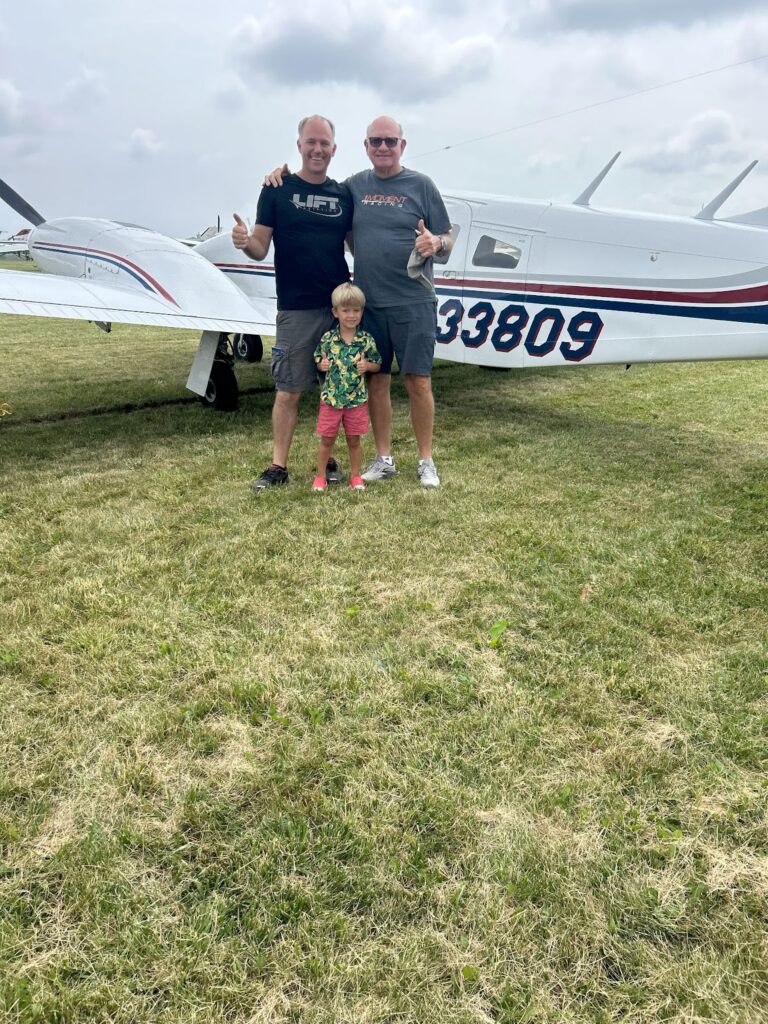
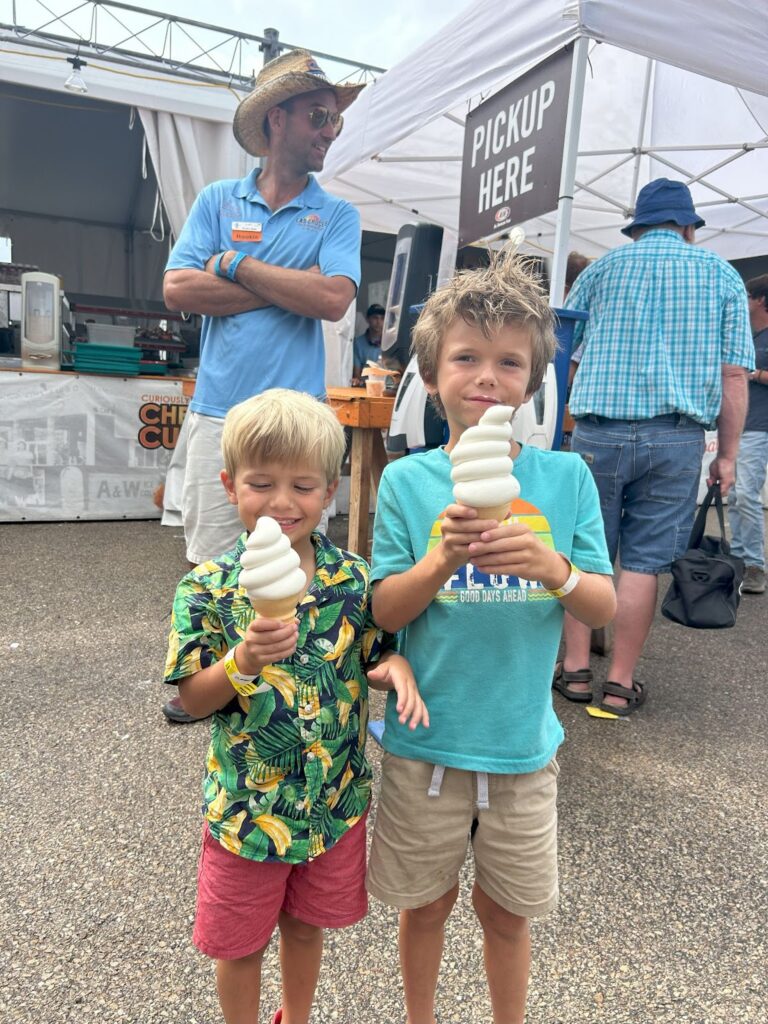

In August, the team shipped out and installed the backup engine from 2023. Thanks to Mike Pattishall, Matt Sparck and Ed and Janie Smith for helping swap the engine and rides to Michigan! Also a big thank you to Adam and Bobbie Lambert for the hospitality in Escanaba. It was nice to have a hangar to work in while swapping the engine. If you are ever driving through the UP, be sure to grab a Dominos pizza from one of their franchises!
In September, another first was getting to attend the local airshow at NAS Oceana as a static display. One of the funnest parts was getting to hang out with all the other performers Friday evening at the Officer’s club. Then over the weekend we got to watch the airshow and hand out some VP Racing swag. We also made some new friends including Amanda Lee and Ward Carroll, and saw a bunch of our coworkers.
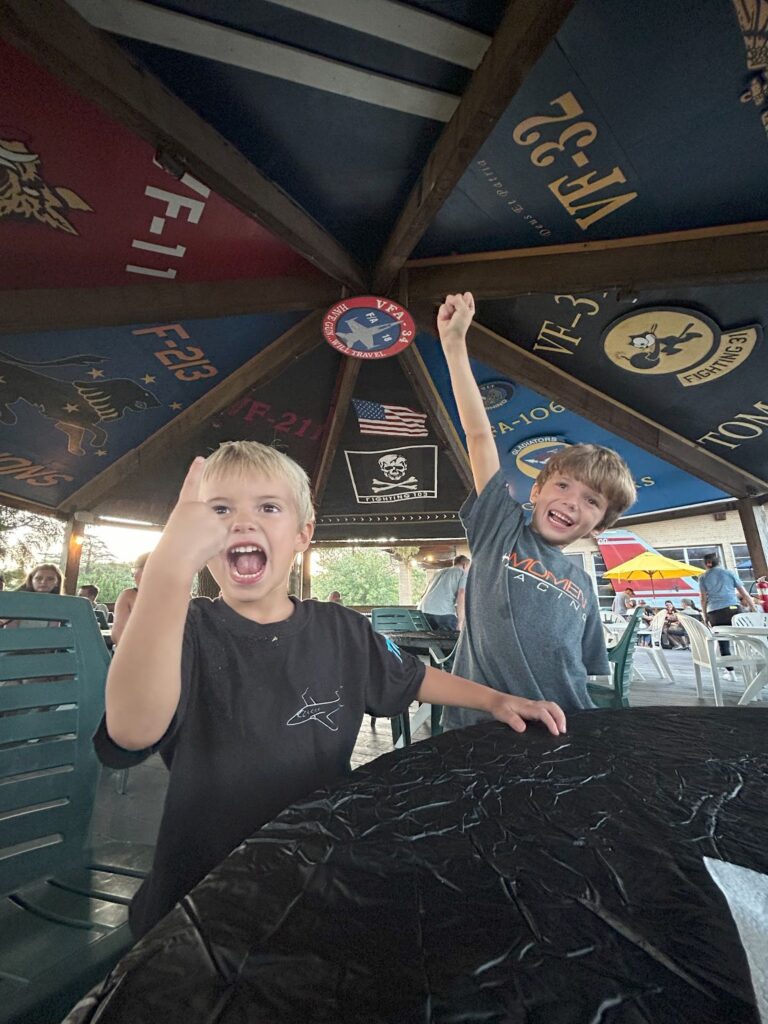


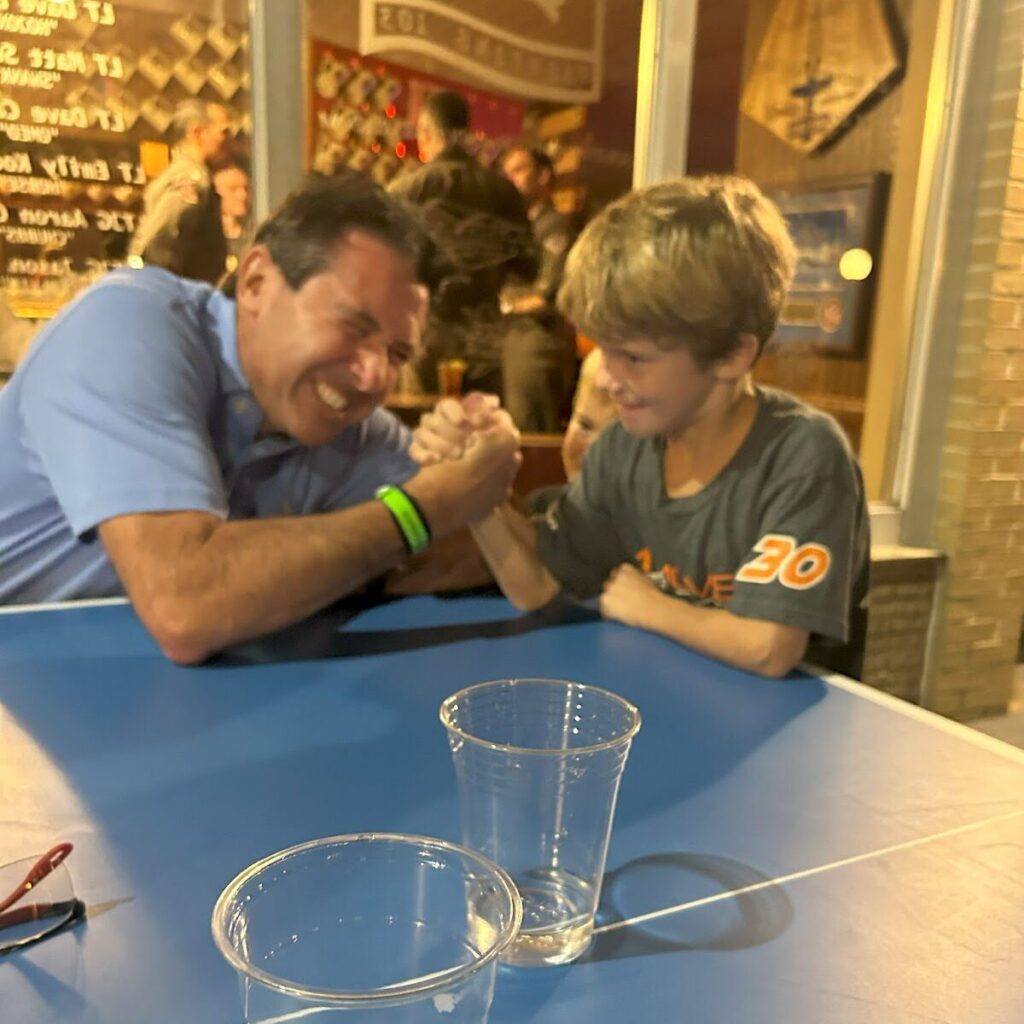
After the airshow it was time for race preparation: applying new gap seals, cleaning spray bar nozzles, replacing heat shields to the cowling, Etc. One cool thing we’ve learned in the last year is adding some dish soap to the spray bar water has really helped prevent the nozzles from clogging even during the off-season. The soapy water also leaves some excellent flow-viz on the fuselage.
Las Cruces
Practice and Qualifying
Our time in Las Cruces got off to a bumpy start with a failed fuel pump. Fortunately Andy landed safely and was able to overnight a replacement and get it installed the next day. But even with that hurdle resolved, we still spent most of Thursday and Friday troubleshooting inconsistent fuel settings and EGTs. Fortunately, Andy and Thomas were able to work fast and replace the fuel injectors just in time for our qualifying slot. After qualifying we determined that the failed fuel pump from Wednesday had sent debris downstream and clogged the injectors up. After flushing the system and replacing the injectors a second time, there were no additional issues for the rest of the weekend.




Even with all of those difficulties we still managed to qualify 2nd at 337.7mph, just behind Tom McNerney who qualified with 338.5mph. Visibility was pretty poor in the afternoon and the winds were rough, but everyone was able to log a time and the weather was forecast to improve over the weekend.
On the subject of qualifying, it is worth discussing the timing and how we should (or shouldn’t) compare these speeds with the speeds we saw in Reno. For the big course, Pylons 5, 6, and 7 are placed the way they are to avoid infringing on BLM land (This is ultimately a good thing because it ensures there will not be any risks of encroachment around the field like there was at Stead). So, in order to fly a smooth racing line, the actual distance we end up flying is about 5% greater than the official course distance (which is measured pylon-to-pylon). So that means, Andy’s true airspeed was closer to 355mph (a +17mph jump). Tim Slater is actively working on some telemetry packages that will enable people to see our true airspeed during the race and even provide real time alerts when someone cuts a pylon.
This year the class borrowed an aspect from the AirVenture Cup. Rather than posting and updating the qualifying times as they came in. The results were withheld until they could be announced during the class dinner. State senator and pilot Bill Soules did the honors, and it was fun listening to all the reactions as people realized how close (or far off) their predictions were.
Saturday
The day started with the bronze heat, the first race in the post-Reno era. Kevin Eldgredge in his liquid cooled Glasair III quickly opened up a comfortable lead on the rest of the field. However, behind him was a three-way fight for 2nd. Bijan Maleki #23, Chris McMillian #96, and Dee Child #60 battled for the entire race, and managed to catch the 7th and 8th place planes of Sean VanHatten and Skylor Piper for an awesome 5-wide finish!
In order to maintain a full heat of 8 airplanes, the top four from the bronze heat were bumped up to the silver heat. And following the silver heat, the top three would bump up into the gold heat. Therefore, it was possible to race in all three heats. Kevin came very close to pulling this off, but a pylon cut on the last lap dropped him from 3rd to 4th.
Next was our race in the gold heat. With Tom on the pole, we were excited for some good racing and hopefully passing. We ran the start lap conservative and then started to turn up the boost. Over the next couple of laps Andy worked his way next to Tom in Race 4 and traded some altitude for airspeed to complete the pass. The laps went well and the engine was running nice. Cool temps and injectors weren’t leaning at power like qualifying. We got the white flag call and it was one lap to go! As Andy crossed the home pylon there was a little confusion on whether , he had just completed the last lap or only just started the last lap. So just to make sure he did all the laps he dropped down from cooldown for one more lap just to be sure.
Behind Andy and Tom there was another three way battle between Peter Balmer, James Webb, and George Catalano. It was fun watching Peter pilot Race 44, Lynn Farnsworth’s old plane, freshly rebuilt by Tom McNerney. George was flying Kent Edmunds Super Legacy, Race 77, with James Webb chasing him down, running George’s old supercharger on the Manclark Race 69 racer.
Sunday
The weather on Sunday was sunny and the airshow opened with a Sport Class flyby during the opening ceremonies.


After taxiing the plane to the pit area, Andy went over to help Brian Murray with commentary for the Bronze and Silver races. Like all other forms of motorsports it’s always good to get the perspectives of the racers and that will be something we look to continue into the future.
Sadly as Andy was strapping in for the gold heat, we lost Chuck Coleman. He was an incredible pilot with so many amazing achievements in aviation, and he will be dearly missed. As the emergency crews responded to the crash, the rest of the airshow and the gold race were canceled, and the spectators were asked to leave. In the end we were scored in 1st place based on how we finished on Saturday’s race, but it was a horrible way to end an otherwise historic weekend.



Back on the east coast, fellow racer and test pilot extraordinaire Sean Van Hatten came out for some flying and motorcycle riding. We did some legacy formation flying, and then some slow formation with the 150 and Kitfox. Alex and Grayson were riding with us and were hilarious on the radio talking with each other. After the standard formation it was time for some tail chase. In the break, Grayson called out, “See ya sucka!” and the chase was on. The boys did great chasing each other, working on the right amount of lead/lag in the turns and pretending to shoot each other down. After the first round we swapped planes and went again. Was definitely one of those special moments flying and endless giggles filled the radio.
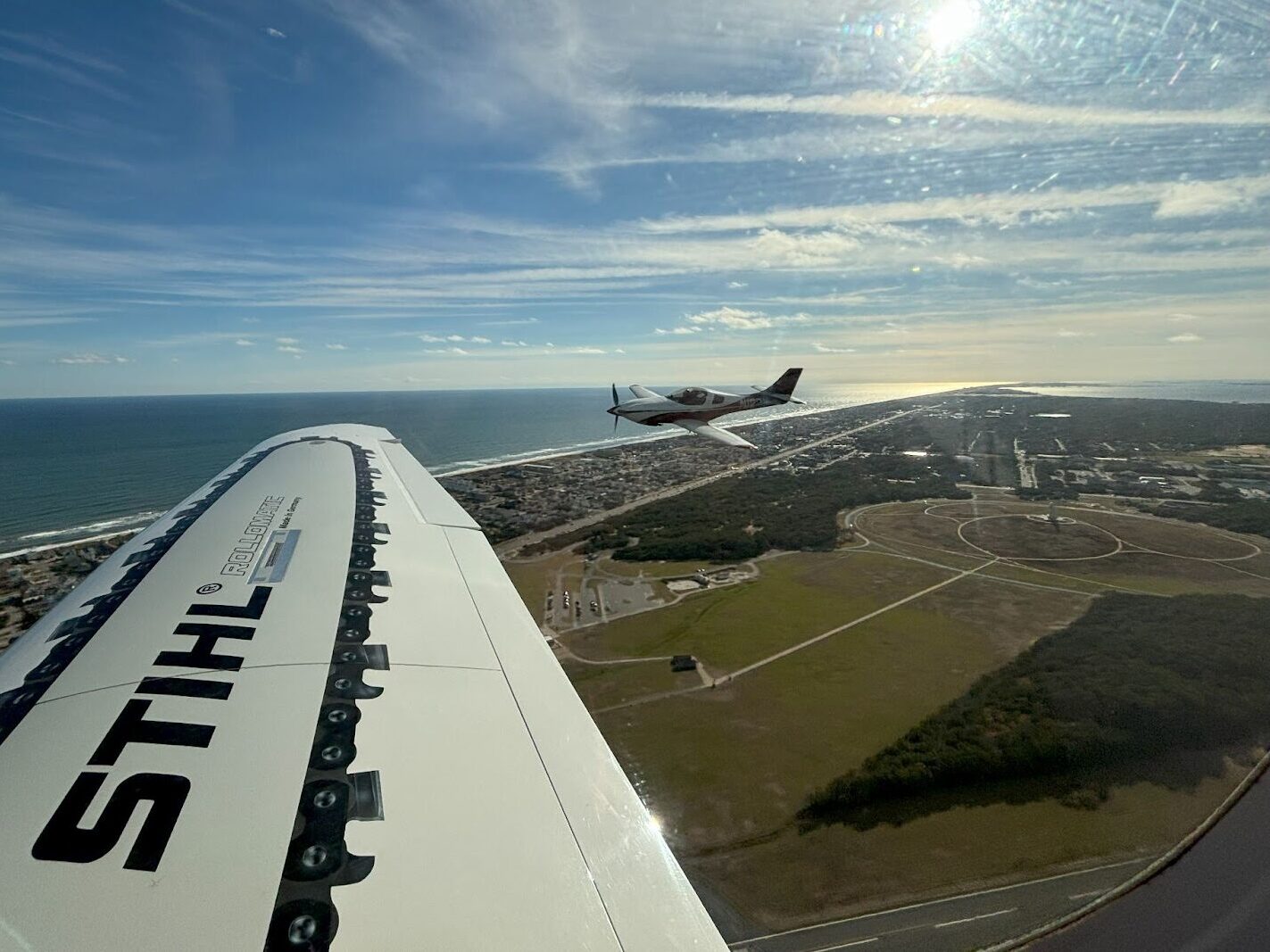




With 2025 on the horizon, we’re excited for more races, new connections, and reaching even greater heights. Thank you for your unwavering support—here’s to more thrilling adventures in the year ahead!
Warm wishes,
The One Moment Air Racing Team


